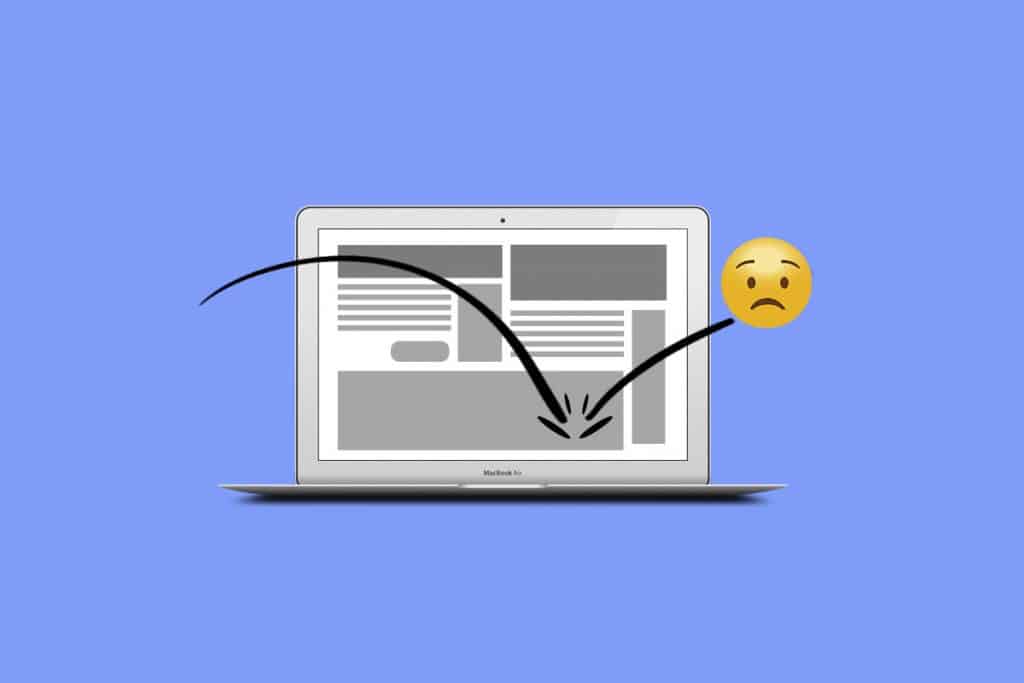
With a website, appear a few burdens which never let you do business peacefully. Just when you start thinking that your website is going to give you all the online attention arranged on a plate, it starts showing its true colors. One of the concerns which all the small to medium business owners come across is their website’s bounce rate.
This single aspect can make or break your business’s future, and you need to be cautious enough to keep the bounce rate as less as you can in order to improve your SEO results. Those who aren’t much aware of bounce rate can go through our article to have a fair idea.
What is Bounce Rate?
Bounce rate is the percentage of the total number of your website visits which have been a single page session which means the number of visitors who have left your website without visiting a second page from the page where they have landed on. The concept of bounce rate is typically employed to determine a particular website’s overall engagement.
How to Measure Bounce Rate?
The total number of the single-page visits on a website is divided by the total number of website visitors for a given period of time and then it’s multiplied by 100 in order to calculate the bounce rate of a website. For example, if your website’s homepage has received 400 total website visits in a month and 100 of them were single-page visits, your bounce rate should be (100/400) X 100 = 25% for the homepage.
Bounce Rate vs Exit Rate
Bounce rate and exit rate both are quite similar to each other and employed by the professionals as the representation of website engagement. But one needs to understand that there’s a subtle difference between these two different aspects of website engagement.
Bounce rate, as you have read above, measures the percentage of visits on your website which was a single-page visit where the visitors did not view another page. Exit rate, on the other hand, calculates the number of web page visitors who have left a web page regardless of how many pages they have visited before for the particular session.
The above definition of these two leads us to the conclusion that exit rate is the percentage of the visitors who have exited from a web page. It does not specify whether the page is the only page visited; all that matters in exit rate is a visitor exits from a web page. So, it can be said that all the bounce rates are exit rate but all exit rates are not Bounce Rates.
For instance, if your website homepage gets 100 visitors (who landed on the homepage directly) for a particular time period and 50 of the visits leave the site without going to another page, your homepage’s bounce rate would be 50%.
But supposedly, the homepage had 500 visits which were led from the other pages (visitors may land on about us or services pages at first) and 100 of them left the site from the homepage. Thus, the exit rate of the homepage would be 20%.
Definition of a Good Bounce Rate
There’s no such thing called a precise bounce rate with billions of websites present on the internet at the very moment. It’s challenging to generalize the term and measurement for this metric with a wide array of various types of websites and industries who are targeting different audience around the whole planet.
The definition of a good bounce rate is subjective as well based on the type of web page and the source of traffic. For instance, if the topic revolves around an informational article which helps you with specific needs and the traffic source is the organic search result, your web page’s bounce rate can reach 90%. Despite having a higher bounce rate, this should not mean that the page has a bad performance.
There’s always another side of a coin and in this case, the higher bounce rate may mean that your article is wonderfully written and offers every possible solution a reader wants to find out. Thus, the reader doesn’t visit any other page and leaves the site when he/she finishes the whole article. On the contrary, a web page with low bounce rate may not always convey a great performance as the page may not be user-friendly or properly informational.
Fortunately for you, HubSpot has been able to provide a rough sketch of benchmark bounce rate for different types of websites which display how different kinds of websites have different benchmarks of bounce rate on an average.
|
Website Type |
Benchmark Bounce Rate (%) |
|
Content Websites |
40-60 |
| Lead Generation Website |
30-50 |
|
Blogging Website |
70-98 |
| Retail Websites |
20-40 |
|
Service Websites |
10-30 |
| Landing Pages |
70-90 |
You should never put your bets on the above-mentioned benchmark bounce rates but the figures above may give you a rough sketch on the bounce rates different kinds of sites generate on an average. The above table can work as your rough guideline in terms of bounce rate.
Bounce Rate and SEO
Bounce rate and SEO (Search Engine Optimization) have a very deep and strong connection without any single doubt. But if you think the bounce rate in Google Analytics has something in relation with the Google search result (most of the people think so since Google Analytics is a Google product), you cannot be more wrong! It can hardly be imagined that Google relies on the Analytics result of a website for the ranking. Since the bounce rate may appear incorrectly if the analytics is not setup prominently and manipulating the bounce rate in Google Analytics is a child’s play, Google never considers the Analytics result for an enormously vital aspect of a website: search ranking.
However, if your website visitors do not stay on your website and bounce back from the page they’ve landed on, it may create a hassle for you in terms of ranking. The bouncing visitors of your website can be a clear indication of their dissatisfaction with your website since they have not visited any other web page or taken any action as such. Google monitors these activities and considers this very aspect while providing the search result. They may not rely on the Analytics but certainly, they follow some other parameter in terms of counting the bounces.
Bounce Rate and Conversion
From a hardcore conversion perspective, bounce rate can be considered as an important metric to measure your success rate! For instance, if you have recently redesigned your website with a hope that it will do better in terms of conversion and sales, you may need to eye on the bounce rate of your website (or a web page). If you discover an increase in the bounce rate, the change in design you’ve made might have gone upside down and it can also explain the low conversion rate of your website or a particular page.
You can also check the bounce rate of your website’s most popular pages. Note down which page has faced the highest bounces and which one has faced the lowest. You can compare the two pages to work on your design and other components and then, you can try to discover whether there’s been a change in the conversion rate.
How to Reduce Bounce Rate?
We would recommend you to check your analytics to get the understanding which part of your website needs the bounce rate to be reduced the most. That said, here are the top techniques to reduce your web page’s bounce rate. Please have a look at them to let your website get you the most desired outcome.
Analytics
One of the most remarkable yet unconsidered ways to reduce the bounce rate is changing the procedure of the metric’s measurement. The popular analytics software present in the market such as Google Analytics will count each leaving visitor of a web page as a bouncing visitor even if the visitor spends a considerable amount of time on the page and engages into interaction with the components of the page. So, Google Analytics’ basic settings will count each visitor leaving a web page without visiting another page regardless of the time spending on the page.
This may not be termed a technique to ‘reduce’ the bounce rate but the solution can provide you with the original bounce rate of a particular web page which will help you reduce the bounce rate. A probable solution to the above-mentioned problem is generating virtual pageviews in Google Analytics for the relevant events. For instance, if your website consists of an interactive page where your website visitors interacts with the components, you will be able to generate the virtual pageview in Google Analytics. In this way, you will be equipped to measure how many visitors engage with your page and won’t assume the active visitors as bounces.
Content Strategy
If you want to increase the engagement level of your website’s visitors, one of the most viable ways is identifying and highlighting the content you believe they’d like and prefer (like the pages that receive a good amount of traffic organically). Once you find out the most engaging contents, you can create your website’s Above the Fold containing the contents just like keeping the best-selling products of an eCommerce website on the homepage. Including the image, title, and description is highly preferred in terms of comprehension which eventually drives CTR (Click Through Rate).
If your website receives a significant amount of traffic from the returning visitors, then you need to apply another strategy. You ought to keep your contents fresh, unique and regularly updated in order to instigate the visitors to learn something new and useful. Repeat visitors, on the other hand, will certainly appreciate the regularly updated fresh contents which can enhance their knowledge. In this way, you can get referral visits as well along with the reduced bounce rate.
Web Design and Usability
You can make improvements to the website design and usability section in order to make it more user-friendly, acceptable, and more engaging. This will include a few aspects such as improvement of the graphics quality, making use of prominent color contrast, font size modification, improvising the CTA (Call to Action), and managing whitespace to name a few.
Your website should be designed in a way that it helps the users find out exactly what they’re looking for in the fewest possible clicks. Incorporating a search bar along with a clear and clean navigation bar is also recommended for usability and improved engagement. If your website offers a great number of products or services, the navigation bar menu should follow a clean hierarchy.
Another great solution for reducing the bounce rate of your website is making use of responsive design. Along with the increasing mobile users, more number of people are browsing your website through their mobile device. Thus, if they open your desktop-ready website on their mobile device, the usability would certainly not be at its peak. If your great-looking website for a 1024×768 resolution desktop doesn’t live up to the expectation of an iPhone X user, your site is going to be punished; badly. So, you should make all the pages responsive and adaptive enough for all the devices used nowadays.
Another important aspect that can improve your website’s usability and diminish the bounce rate, as a result, is the page loading time. Numerous studies, researches, and statistics have shown that the sites that take more than a few seconds to load (considerably 5 seconds) are more likely to have higher bounce rate since the users don’t want to stick to the website while they see the website getting loaded. There’s an array of website speed testing tools which can analyze the page loading time and troubleshoot the glitch.
Last of all, when it comes to usability of a website, removing some of the pop-up advertisements and data-heavy components from your website will come handy in reducing the bounce rate. You can run A/B Test on the different website improvement ideas to discover which idea is worth applying for and provide a positive impact on your website’s bounce rate.
Marketing
If you compare the bounce rate of your website or webpage by channels such as social, organic, paid, referral, direct, etc., it will certainly help you discover whether the issue revolves around your traffic sources or somewhere higher up in the funnel.
Once you discover and distinguish the channels which have higher bounce rate than the others, you can scrutinize your efforts or marketing campaigns for that particular channels. For instance, if the majority of the visitors are landing on your website via advertisement, it’s always wise to ensure that the ads and the landing page contents are relevant to each other and both of them convey the same statement. Moreover, the landing page optimization is required as well to respond to the campaign so that the bounce rate can be reduced.
In addition, you should use the keywords that would be relevant to the business you do and should be related to the sales and conversion. If you don’t do that and choose highest searched generic keywords, the possibility is you’re going to receive a good amount of traffic but they will certainly not convert which is eventually a loss for you and one of the reasons for increasing bounce rate of your website. Keeping matching keywords is tremendously important for reducing bounce rate and increase the conversion.
How Intlum Works on Reducing Bounce Rate
Intlum comprises a group of immensely talented and knowledgeable individuals who deal with the bounce rate of a website. Thus, we have the best expertise when it comes to Bounce Rate deduction. We analyze a website run several tests on it, create a workflow which includes all the strategies and procedures we are going to follow in order to reduce the bounce rate of the particular website. If you have any concern regarding your website’s bounce rate, Intlum has always kept its door opened to help you just like various other businesses who have reportedly seen remarkably reduced bounce rate.









